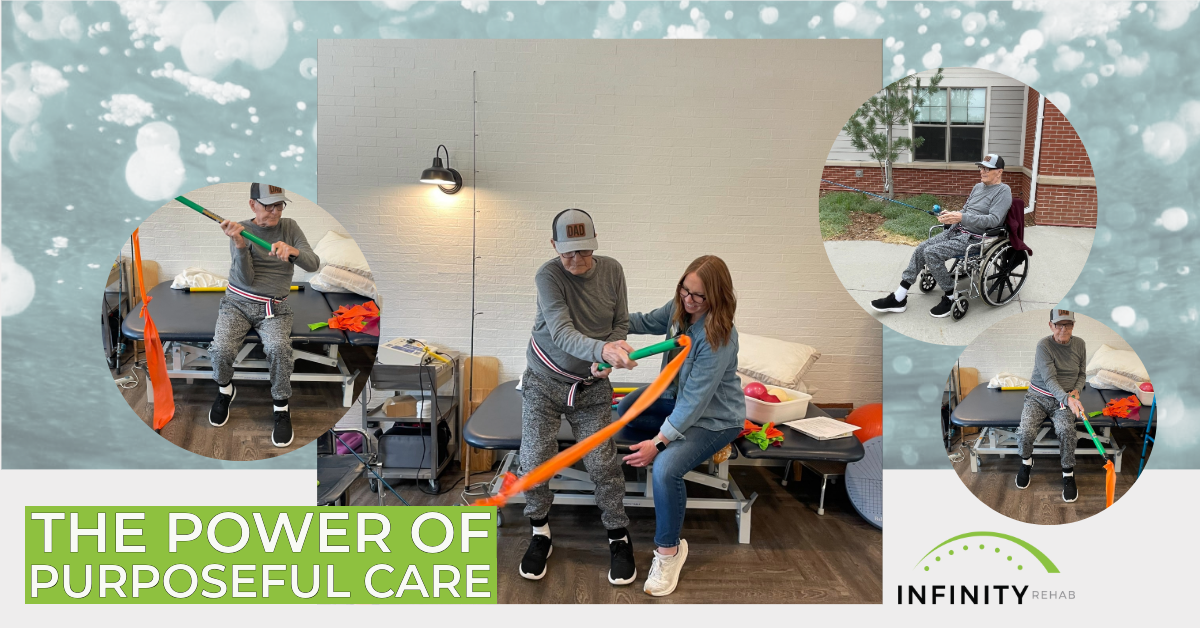In the third part of our wheelchair assessment series, we look at accommodating and measuring thoracic kyphosis – including a tool that is invaluable to the documentation process. Earlier this year, we looked at identifying seating and positioning needs (Part 1), as well as how to measure for a wheelchair (Part 2).
Assessing and Accommodating Kyphosis
Kyphosis is an over-curvature of the thoracic spine (middle segment of the vertebral column) which can lead to discomfort or complete debilitation. Similarly, kypholordosis is the curving of both the thoracic and the lumbar (lower) spine. Fortunately, simple adjustments for patients in wheelchairs can lead to better posture and help reduce pain and limit debilitating conditions.
It is imperative to identify any evidence of spinal changes when screening patients for improved wheelchair seating or positioning. This change of the cervical region can significantly affect the biomechanics of the muscles involved in swallowing, as well as diminish an individual’s ability to visually access their environments. Collaborate with the attending speech therapist on positioning needs for eating and swallowing issues because thoracic kyphosis also presents with a forward head position.
KypholordosisThe forward head position directs an individual’s gaze downward which can be socially isolating; and affects a patient’s ability to visualize their plate at mealtime. The work involved in visualizing and eating a meal can hinder nutritional intake as it requires great effort the patient to go into cervical extensions. Cervical extensions while eating creates the risk of choking during swallowing. The cervical changes, and resulting forward head position, becomes more pronounced with the severity of thoracic kyphosis. Also, thoracic kyphosis inhibits rib mobility and rib expansion which can affect an individual’s air intake. Thoracic kyphosis can also be associated with an increase in falls as there is a posterior shift of the thoracic region to the center of gravity with upright postures.
Justifications for wheelchair seating and positioning needs for a customized backrest in order to accommodate thoracic kyphosis:
- Visual access of environment to improve social interactions
- Optimal positioning for eating/swallowing/respiration
Measuring Degree of Curvature
The flexible curve ruler, pictured right, for kypholordosis is a quantitative documentation tool that is useful in the documentation and justification for the section requiring “degree of curvature” on the Department of Social and Health Services (DSHS) wheelchair evaluation form for kyphosis/scoliosis. This can often be a dilemma as one of the only clinical measurements for degree of curvature is the Cobb method which requires a radiograph and determination by a radiologist for the actual degree of curvature. As this is not a realistic option for wheelchair evaluation documentation for the frail elderly at the wheelchair level, another quantitative measure had to be found.
The flexicure ruler method for kypholordosis provides a quantitative measure to assess change over time with therapeutic interventions for those appropriate individuals. Clinical kyphosis is determined to be evident when the kyphotic index (KI) is 13 or greater. For DSHS documentation, I submit an additional handout explaining this process of quantitative measure and have yet to be challenged.
A teaching disc, authored by Carleen Lindsey, PT, MS, GCS, and produced by the American Physical Therapy Association, Section on Geriatrics, Osteoporosis Special Interest Group was created as a learning tool for therapists. The flexible curve ruler is evidence based, efficient, and is a cost effective method for obtaining valid, reproducible objective measurements for individuals with kypholordosis and is easy to learn with the instructional video. The flexicurve ruler, 24” length, is inexpensive, and can be found at most art or office supply stores.
Keri Poffel is a Physical Therapist and Master Clinician with Infinity Rehab. She earned her Master’s in Physical Therapy from Eastern Washington University. She joined the Infinity Rehab family soon after graduation and has practiced at Avamere Olympic Rehab of Sequim since December 2003. Keri became a board certified Geriatric Clinical Specialist in 2008 and earned her Clinical Instructor accreditation from the American Physical Therapy Association in 2009.







